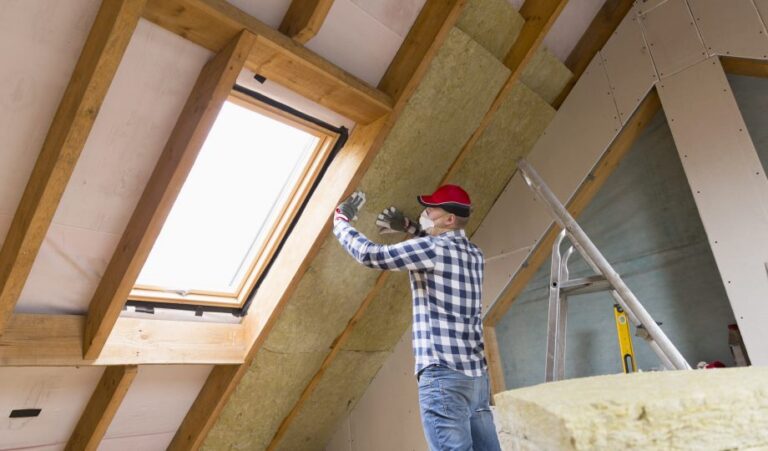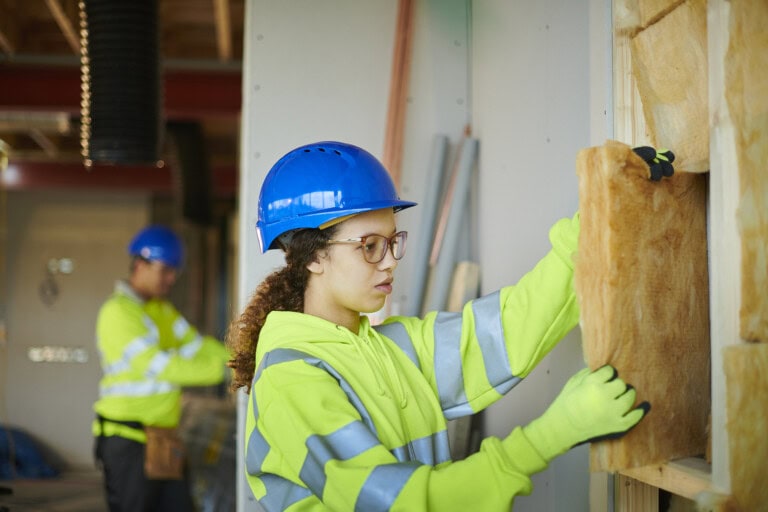Fixing the Competency Gap: Moving Beyond Qualifications in Domestic Retrofit

The ambition to retrofit Britain’s homes is one of the country’s most urgent and far-reaching challenges. Yet a critical barrier remains overlooked: widespread non-compliance across the sector. We believe the persistent, under-examined gap between qualifications and real-world competence is a significant factor that demands greater focus if we’re to succeed.
When Greenworkx first launched, our focus was on solving the retrofit workforce shortage. We built a platform to connect individuals with free training and qualifications. And it worked: thousands engaged, hundreds achieved Level 2 and 3 qualifications and many found work opportunities. But employers, especially small businesses, were at times hesitant to hire. Why? Because the new talent, while qualified on paper, lacked the practical experience and competence to contribute effectively on live, tightly regulated projects.
This disconnect matters now more than ever. Not only is the sector governed by increasingly rigorous frameworks like PAS 2035:2023 and pressured by tight timelines and funding cycles, but the pace, scale and urgency of retrofit work are rising too. Our industry faces a perfect storm: more retrofit is needed, which demands more people, and we’re raising the bar on quality and compliance. That means greater exposure to risk, a higher chance of non-compliance, and an even greater need to close the gap between training and readiness.
When even experienced professionals struggle to meet standards, relying on underprepared new entrants only amplifies the risk. We started hearing a common refrain from employers: “They’re trained, but they’re not ready.”

When we looked at the numbers, reality hit harder.
ECMK’s 2022 annual report reveals there is a 44% non-compliance rate in audits of Energy Performance Certificates (EPCs) for existing dwellings. The previous year’s rate was 38% – based on audits covering 2-3% of total assessments.1 TrustMark, the government-endorsed quality scheme, recently suspended 39 contractors last year for delivery non-compliance under PAS 2030.2
If these are the visible issues, what lies beneath the surface?
These figures aren’t about finger pointing – they highlight a systemic issue.”
These figures aren’t about finger pointing – they highlight a systemic issue. Non-compliance means delays, increased costs, resident dissatisfaction and health impacts as well as declining trust in the system. Competence gaps cause funded projects to stall, with targets missed and funding underutilised. Compliance issues in previous retrofit programmes have caused well-documented delays: Nottingham’s Destination Zero saw a 50% reduction in treated homes, and Sutton’s Energiesprong project missed 77% of its targets. In SHDF Wave 2.1, just 14,500 homes had been upgraded by January 2025, out of a target of 90,000, with £222 million spent from a £778 million budget, echoing the underperformance of the Green Homes Grant (2020/21).3
And without publicly available data on workforce capability across the sector, it’s hard to assess, let alone address, the true scale of the skills gap.
We’ve concluded that qualifications alone are not enough. We need a new competency model, one that ensures individuals are both qualified and truly ready to meet the demands of today’s retrofit programmes.
Here’s what that might look like in practice:
1. Faster Time to Competence
We must bridge the gap between formal qualifications and ‘day one’ readiness, the ability to contribute onsite from the start. This means designing interactive, role-specific learning that mirrors complex, real-world scenarios newly qualified workers often struggle with, helping them apply knowledge faster and more efficiently than learning by doing alone.
2. Practical Skills over Theory
Continuing Professional Development (CPD) is too often outdated, unstructured, or treated as a compliance tick-box. We need dynamic, hands-on resources: short videos, job aids, walkthroughs, mobile-first tools that support learning in the flow of work, and digital ‘co-pilots’ that guide onsite decision-making.

3. Measurements & Benchmarking
A smarter workforce strategy starts with better data and measurement. Competency frameworks and diagnostic tools can help assess current capability and target training where it’s needed most, turning workforce planning into a strategic advantage.
4. A Culture of Openness & Continuous Improvement
Above all, we must get more comfortable acknowledging where things go wrong. Without transparent quality assurance data, and open conversations about non-compliance, systemic improvements are impossible. We should be aiming for maximum performance, high trust and clear accountability across the delivery ecosystem.

By making competence, not just qualifications, the foundation of our workforce strategy, we can build a sector that is capable, confident and credible.”
This sector is at a pivotal moment. The demand for energy and retrofit professionals is only growing, driven by policy backing and new funding for clean growth as we near 2030. But the supply of experienced, competent talent isn’t keeping pace. We can’t afford to keep doing more of the same.
By making competence, not just qualifications, the foundation of our workforce strategy, we can build a sector that is capable, confident and credible. And that’s essential if we’re to deliver on the promise of a just and effective transition to low-carbon homes.
It’s time to take this seriously. Let’s talk about failure, so we can start fixing it.
1 ECMK, Energy Accreditation Scheme Annual Report 2022, ecmk.co.uk
2 TrustMark contractor suspensions, trustmark.org.uk
3 DESNZ, Summary of the Social Housing Decarbonisation Fund statistics: March 2025
Related
Accelerating Local Retrofit: The Power of Collaboration

Reimagining our Homes and Communities

Regenerative Places: Empowering communities to improve homes and neighbourhoods for the benefit of people and planet.

UKGBC Trends Report signals growing focus on resilience across the built environment

